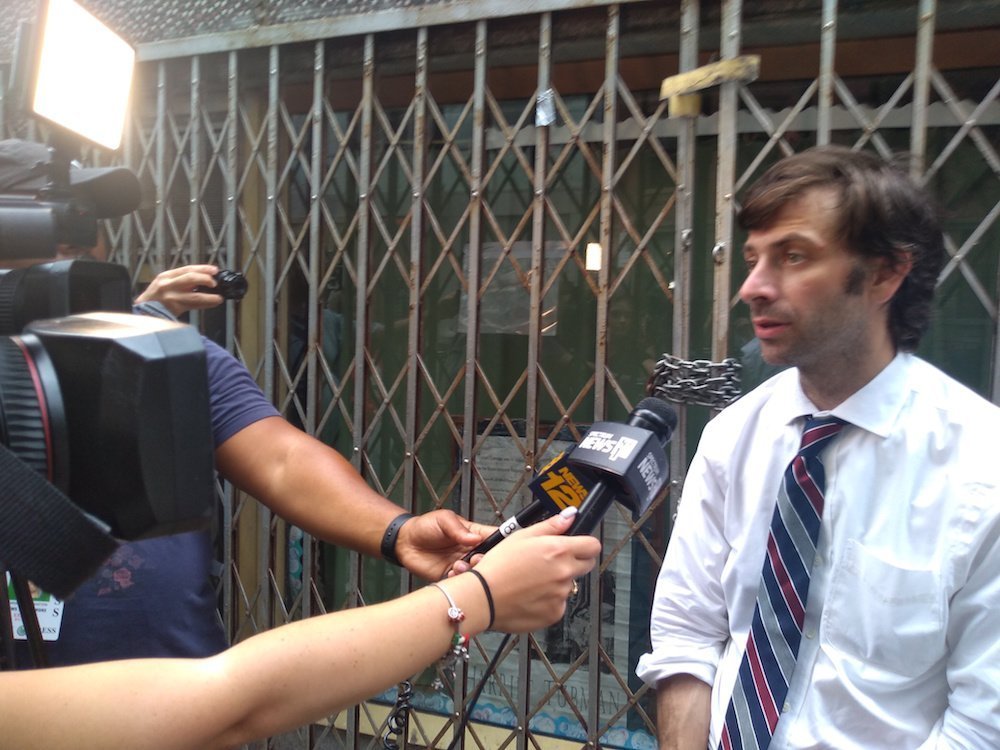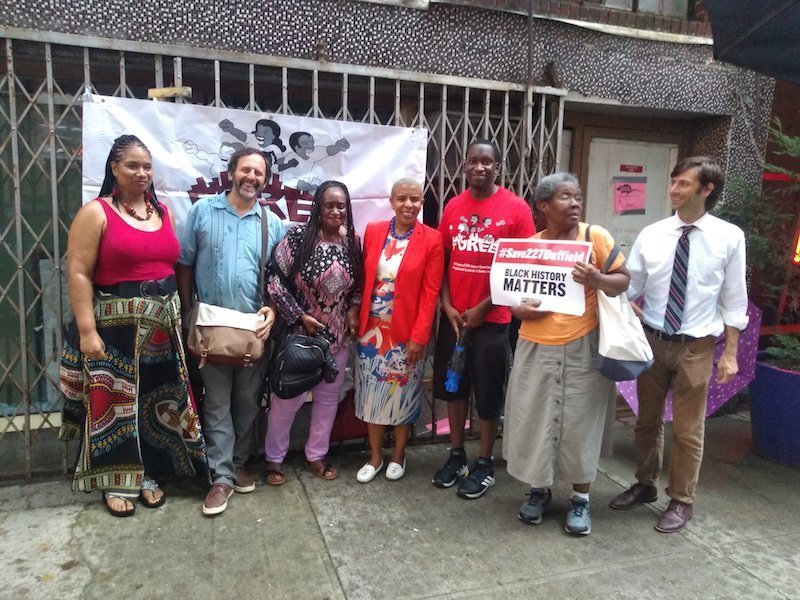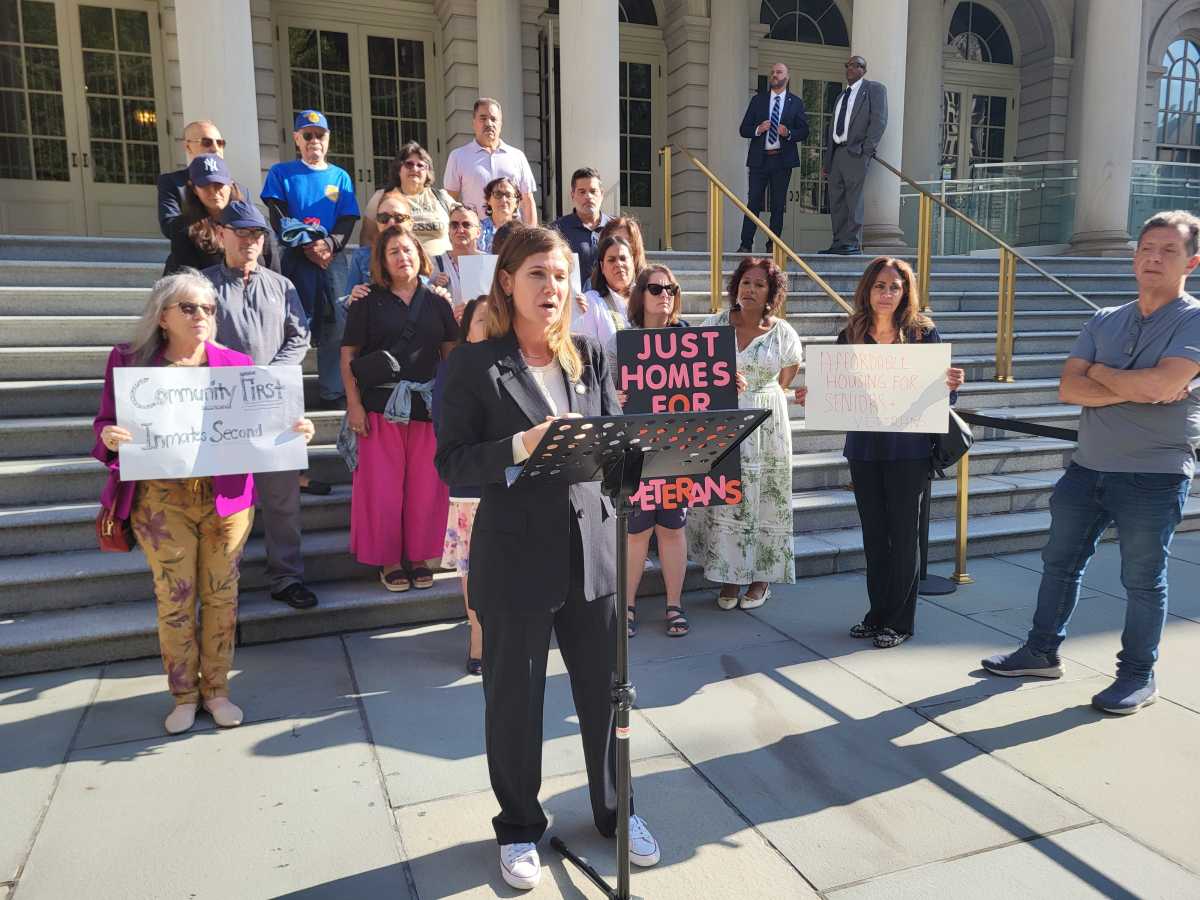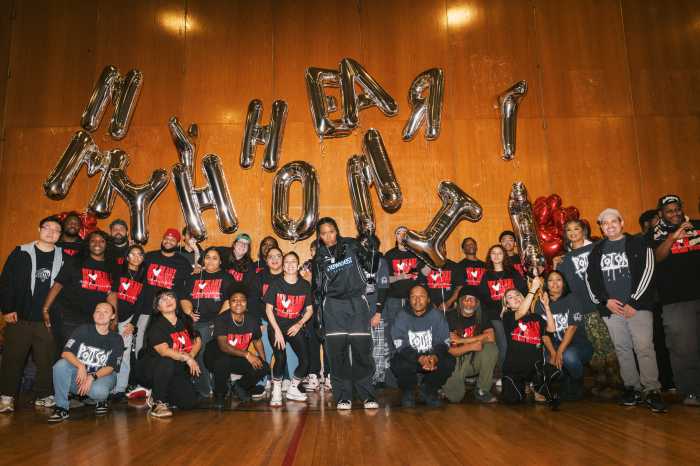City Councilman Stephen Levin (D-Northern Brooklyn, Boerum Hill), City Council Majority Leader Laurie A. Cumbo (D-Fort Greene, Clinton Hill, Prospect Heights, Crown Heights), and advocates from Families United for Racial and Economic Equality (FUREE) and the Circle for Justice Innovations (CJI), yesterday called on the Landmarks Preservation Commission (LPC) to immediately review and preserve a Downtown Brooklyn property prominent to Brooklyn’s African American history.
The three-story property at 227 Duffield Street in Downtown Brooklyn stands between the Fulton Mall and Willoughby Street among several new skyscrapers built within the last 10 years.
“All around us we have new construction and new development, and I think that it’s really vital that at the same time that’s happening we are preserving our historic resources and making sure that we are showing future generations a part of history we can be proud of,” said Levin.
The building was once home to staunch abolitionists Thomas and Harriet Truesdell during the Fugitive Slave Act epoch. Although it has not been officially verified, the house, with a deep tunnel inside, is believed to have been a part of the underground railroad.
“We know that the house is an abolitionist home because it appears on a map the Brooklyn Historical Society created for us. Additionally, there is a letter written by William Lloyd Garrison in which he refers to the Truesdell’s and his stay in the house,” said Vaughn in response to skeptics of the buildings historical validity.

Duffield Street was renamed Abolitionist Place in 2007 in honor of the neighborhoods antislavery activity.
The building is a patently significant cultural landmark, according to CJI director Aleah Bacquie Vaughn, whose relevance cannot be overstated.
“This house is one of several on this block that is a part of that history. The tunnels under these homes, we believe, shuttled people who were enslaved from one house to the next. If authorities were knocking on the door and had a warrant for people in one home they could move these enslaved folks to another place to protect their freedom. It’s really important for us to remember these things. And yes, it’s great that New York is growing and all but let’s not forget who we are, let’s not forget our history, let’s preserve it,” Vaughn said.
One tactic employed by CJI is calling on billionaire philanthropist Robert Smith, who has demonstrated an interest in preserving African American cultural institutions, to fund the purchase of the house from the current owner who seeks to build a new site in its place.
Additionally, a petition to preserve the building, which garnered 500 signatures in its first day of dissemination, was created earlier this month by the CJI. Its tally has grown to approximately 1,800 signatures.
A demolition has already been requested and was approved last month, yet Vaughn persists, imploring the LPC to honor the request of the signatories.
“We’re asking for something that is so simple and will cost nothing. A simple thing. Which is that the Landmark Preservation Commission will put a date on the calendar to investigate this house and come to a conclusion that this has historical significance. As soon as it gets on the calendar they cannot go forward with the demolition,” Vaughn said.
The advocates hope to turn the site into a museum.
“We believe that this would make a phenomenal museum. And we have already started some inroads into looking at potential funding sources for that,” Vaughn continued. “In addition, now that these hotels are here on the block you have a constant stream of people who can go right across the street and support this museum. And I’m sure they would be fascinated by the history, which most New Yorkers and most Brooklynites don’t know about.”










